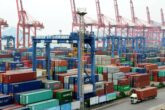May 25, 2022
What Will Determine the Future of Money?
The international economy is beginning to fracture around the development of novel digital currencies and the human values that their systems represent. Since currencies represent a commonly accepted medium of exchange and can act as an enabler or disabler of economic relationships, they have the power to shape how the global economy functions.
The economic landscape today is evolving rapidly with the emergence of various fiat currencies, central bank digital currencies (CBDCs), and cryptocurrencies that each represent a set of goals or priorities set forth by the issuing body. For example, the US Dollar symbolizes globalization. Bitcoin represents hyper-globalization, with a focus on decentralization and a sprinkle of revolution. The Digital Yuan represents an attempt to track purchases, collect data on consumers, and disconnect a sizable portion of the global economy from the US Dollar.
As diversification occurs, we should expect to see the US Dollar challenged on the global scale.
COVID-19, further discomfort with a US-centric global economy, and the implementation of economic sanctions have ignited isolationist sentiment across the world, leading to the fracturing of interests, values, and leadership. If unchecked, this trend could create an economy that is based on a basket of currencies rather than one that hinges primarily on the performance of the US Dollar/US economy. The growing pains of crypto have not deterred the decentralized finance and creator economy from pursuing a privacy-based system that operates outside of the purview of governments, which helps explain the rise of Monero, Horizen, Railgun, Dash, ZCash, and other so called privacy coins.”
China’s continued push to implement a CBDC that logged over $8 billion in transactions in the second half of 2021 has still not been met with serious pushback from the international community. Israel’s reduction in US Dollar foreign reserve holdings also symbolizes a move away from a US-centric system. These trends denote a larger shift to a diversified world economy, where many types of currency (decentralized and state-issued) live alongside one another.
Read the full article from The Belfer Center.
More from CNAS
-
Trump Administration Realises That The Tariff Strategy Has Backfired: Lisa Curtis
Trump administration realises that the tariff strategy has backfired, says Lisa Curtis, senior fellow and program director at the Center for a New American Security.Watch the ...
By Lisa Curtis
-
What Just Happened in the Trade War + Getting Yippy with Richard Fontaine
While Geoff is on travel, CNAS CEO Richard Fontaine joins Emily to unpack the latest trade war developments, including why President Trump paused his reciprocal tariffs and wh...
By Emily Kilcrease & Richard Fontaine
-
Chokepoints - How the Global Economy Became a Weapon of War
The Centre for Finance and Security (CFS) at RUSI was delighted to welcome Edward Fishman, adjunct senior fellow at the Center for a New American Security, for a discussion of...
By Edward Fishman
-
How Trump Could Dethrone the Dollar
Commanding as the dollar may be, Trump’s return to office has created a genuine threat to its status for the first time in generations....
By Edward Fishman




